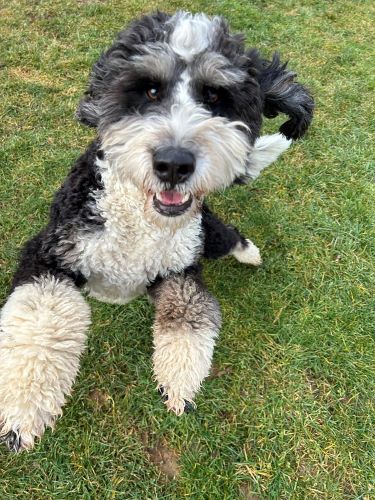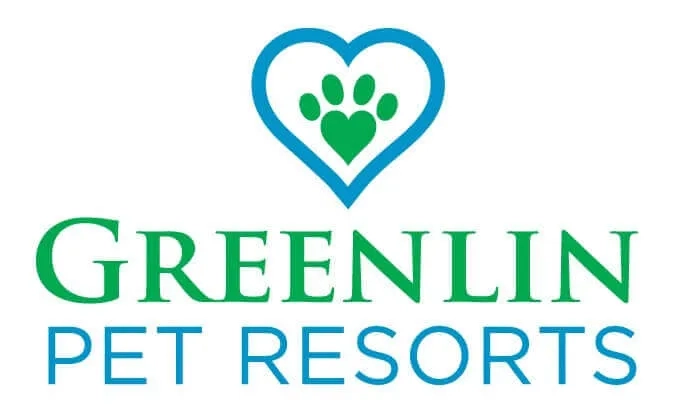Understanding Different Dog Breeds and Their Daycare Needs

The genetic lineage of your dog directly — and literally — shapes its development as it grows and interacts with the world around it. While every dog has its own unique personality and genomic expression, breed traits can instill certain physical, mental, or medical needs that should be accounted for when seeking optimal care.
At Greenlin Pet Resorts’ dog daycare, we take on pups of all sizes and shapes. We don’t distinguish solely on breed, nor do we make assumptions about what activities a dog may enjoy or benefit from based on breed alone.
With that said vets and organizations like the American Kennel Club recognize that different breeds often lead to different needs. Speaking categorically, based on our years of experience and understanding of dog breeds, we have sought to cover a wide variety of instinctual needs within our daycare setting.
Below, we have outlined some of these considerations, as well as some food for thought that can help guide your decision on the daycare you choose and the requirements your dog may have, accordingly.
Understanding Dog Breeds and How It May Affect Their Daycare Experience
First thing first: at Greenlin, we never assume anything about your dog based on breed alone. Experience has taught us that every dog is different.
Looks can be deceiving. A strapping bloodhound may be more interested in belly rubs than outdoor time, while a pint-sized pug may be the type to try to punch above his weight when play gets rough.
A recent study published in the journal Science confirms this observation. When it comes to anxious behaviors and individual personalities, breed is a poor predictor.
However, the study authors are just as quick to point out that certain breeds have centuries’ worth of gene selection weighing against their instincts. Traits like responsiveness to commands or desire to dig can come from the combined weight of generations’ worth of selective breeding.
So, while every dog has the capacity to be socialized — and there is a long distribution of traits along the entire spectrum of every type of breed — certain breeds may be more inclined towards, say, higher levels of energetic activity or a desire to be independent.
Note, too, that certain types of dogs are no longer bred for their personalities but, rather, their looks and physical build. In these cases, the lineage of the parents is often more important than the breed itself when looking for predictors of behavior.
Finally, and perhaps most importantly, breed may enter into the picture in unclear ways in the case of mixed-breed dogs. A survey of U.S. homes found that a little more than half have a mixed-breed dog. Expression of breed traits can be different from littermate to littermate, and the environment of the dog can be a huge factor in which ones become more prominent.
So with those big heaping grains of salt pushed aside, let’s cover how we at Greenlin strive to accommodate all of our guests’ needs, including those that could stem from the collective weight of their inherited genes.
Dog Daycare Needs for Different Breeds, Separated by Category
Below, we have outlined some considerations and observations we have gathered after more than a decade of looking after all our beloved Central Pennsylvania pets. While not every breed stereotype is true of every dog, we often find that certain dogs enjoy their stays more after we’ve helped stimulate their instinctual needs through special activities and considerations.
Sporting Dogs
Examples: Golden Retriever, English Cocker Spaniel, Labrador Retriever, German Shorthaired Pointer, Irish Setter
Sporting dogs were bred for athleticism as well as reliability while in the field. They are often expected to sprint as fast as they can to retrieve — or sometimes locate — prey. They are also expected to be close by the human in the process, waiting by them until commanded to erupt in a burst of energy towards their job at hand. They are also expected to respond immediately to recall.
Because of these traits, these breeds often have high energy but a devoted sense of companionship. They love play and having a job to do, especially when it involves locating prey. This drive can easily be stimulated through games like fetch or scent-based retrieval.
Most sporting dogs also thrive on love and attention in between workouts. They often enjoy light play amongst a familiar set of friends. And, more so than many groups of breeds, they also enjoy their rest and relaxation.
Herding Dogs
Examples: Australian shepherd, German shepherd, Australian cattle dog, Border collie, Belgian malinois, Welsh corgi, Old English sheepdog
Herding dogs are extremely intelligent and engaged. They are prone to intensive periods of energy and a general drive to find some activity to do. While they are eager to rest and enjoy companionship, they are just as easily spurred to action.
Because of their drive and their intelligence, a bored herding dog can sometimes becomes anxious for something to do. They may resort towards obsessive barking, digging, chasing, chewing, or food-motivated behaviors. Likewise, herding dogs that have not been trained and socialized may develop their own “preferred way” of doing things, leading to habits that may be hard to break.
In the daycare setting, these types of dogs are always eager to engage in something that’s fun and stimulating. They excel at agility exercises, long-distance fetch, or scent-based activities. They may also enjoy observing other dogs’ fun, sometimes even stepping in to help “herd” them, according to their own instincts.
Once a relationship with a herding dog is established, they’re often eager to fall in line as part of the pack. The key, often, is to ensure they’re getting the attention, enrichment, and supervision they need in order to have their working drive stimulated.
Working Dogs
Examples: Boxer, Doberman pinscher, rottweiler, great dane, great pyrenees, Burnese mountain dog, mastiff, Siberian huskie, schnauzer
Working dogs come from a diverse range of task-centered breeding. From sled dogs to rescue dogs to household guardians, each was bred for a specific physical stature and sense of mental purpose.
These dogs can be highly observant, often getting really engaged in activities that stimulate their working drive. By the same token, they are used to down time, and are apt to get rest in between bouts of activity.
Affection is often shown in different ways by these breeds, and the dogs can often pick their favorite people. Integrating them into the dog daycare setting often involves setting expectations and showing consistent treatment across all staff, so that they can learn that we aren’t going to pick favorites, in turn!
We’ve also found that dogs in these categories can be incredibly sweet and indelibly loyal, making it that much harder to say goodbye when its time for them to return home.
Terriers
Examples: Jack russel terrier, Yorkshire terrier, bull terrier, West Highland terrier, American pit bull terrier, Airedale terrier, Welsh terrier
Bred largely to hunt small prey, terriers nevertheless exhibit some variety in their physical stature and behavioral tendencies. All of them love to focus on something, and they often have bursts of energy when that focus really locks on.
Accordingly, giving terriers their ideal daycare environment involves giving them something to keep them engaged and busy. Often, that involves something as simple as a directed game or activity, but many terriers enjoy the simple act of play without any structure needed.
Terriers also tend to respond well to human attention, so keeping staff-to-dog ratios low and personal attention high can help ensure that they have the best time possible during their stay.
Hounds
Examples: Beagle, basset hound, Bluetick coonhound, dachshund, greyhound, whippet
Intelligent, driven, and often independent, hounds were only recently made into household companions after generations of being considered a working animal unto its own. As such, hounds can often focus so hard on their need to explore and track that they tune out everything else around them. They may also become anxious or bored when they lack the stimuli needed to keep their interest going.
Play and games are the order of the day for hounds with high levels of energy. Those with low levels of energy, including bassets, can still benefit from being encouraged to join in sessions involving scent tracking or directed play.
Hounds are also notorious for wanting to define their own boundaries, meaning that tall fences, multiple exit controls, and buried fence bottoms are always beneficial — just in case the call of the critters tempts them too strongly.
Toy and Non-Sporting Breeds
Examples: Chihuahua, pug, shih tzu, English bulldog, American bulldog, dalmatian, poodle, Boston terrier, American Eskimo dog
These dog breed groups encompass a wide catch-all for “non-working” and small breeds. Many once were bred for a specific purpose but now all have a common thread: they are now bred as companion animals.
Despite not having working-class credentials, most of these breeds still enjoy having structure and activities to look forward to. On the other hand, they are also apt to enjoy their rest, simple play, or long stints of attention from humans. They may also be likely to experience separation anxiety, which is why it’s so important to acclimate them towards the daycare environment.
Play Groups Matter More Than Dog Breeds at Daycare
Greenlin Pet Resorts takes a breed agnostic approach to each and every guest. Instead, we perform a thorough temperament evaluation in order to determine how the animal will react to humans, other dogs, and the group at large.
After an evaluation, guests are placed into play groups based on their size, age, and the types of play they enjoy. High-spirited dogs — of every breed — can enjoy more vigorous games and activities. Dogs that enjoy stints of play or deep levels of focus can benefit from the wide range of toys and equipment we offer. Pooches that prefer to “hang out” and take things easy will get all of the love and attention they can soak up, in a lower-key environment separated from the high levels of stimulation in our other play groups.
Each group gets to enjoy all of our facilities, including indoor play gyms, outdoor green spaces, and even special swimming pools designed for the safety of dogs.
Find out how we can pull out the red carpet for your precious pup when you call or contact a Greenlin location near you in the Harrisburg area.
